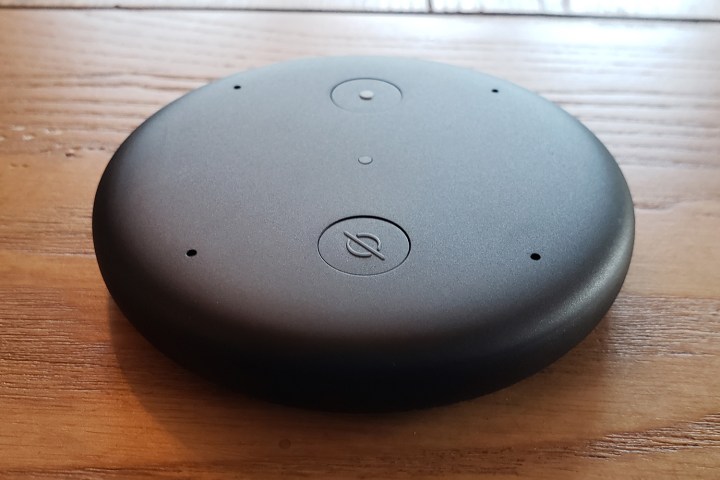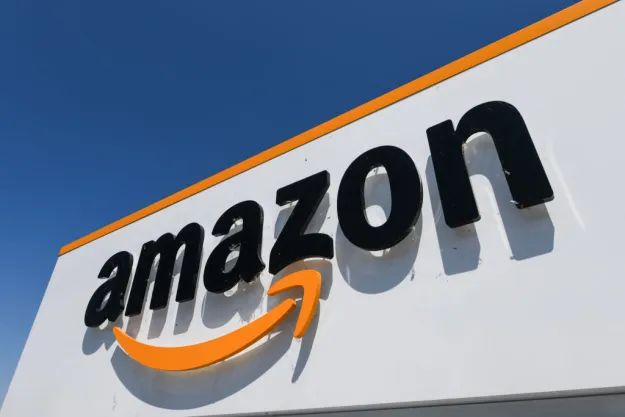
Do you ever find yourself calling out, “Alexa!” to your plain, old dumb speakers before realizing there’s no Alexa inside, only music? I hate to admit that I do it all the time. Hey, don’t judge! When you get used to having Alexa around to do your bidding, it becomes a natural reaction. I also often catch myself talking to Alexa when she’s not there, like in the car, my parents’ house, or even the grocery store. I’m fully aware of how weird this might sound to those of you without an Alexa speaker in your house.
Back in September, Amazon introduced a small device that was overshadowed by the bigger news of the new Amazon Echo Show and Echo Sub: the Echo Input ($35). The device fits in the palm of your hand and does magical things, meaning that it turns regular speakers into Amazon Alexa speakers. It’s essentially an Alexa-enabled device, but without the speaker part. We got the chance to test out the Input and came away impressed. Here are four reasons why you should consider buying the device.
1. It gives any dumb old speaker the powers of Alexa
That’s right: With the Amazon Echo Input, you can turn just about any regular, old speaker you have into an Alexa speaker. Connect the Input to any speaker, and soon you’ll hear the soothing sounds of
When you give a command to Alexa, the blue light on the Input lights up to indicate that she’s listening, but the sound will come from the speaker you’ve connected to the device. If you’re not familiar, there are many other things you can do with
[Want to know what you can do with Alexa? We have a comprehensive guide.]
2. It connects to speakers via Bluetooth or auxiliary
The beauty of the Echo Input is that there are two different ways to connect it to your speaker. The first is Bluetooth, which means that you can have the Input wirelessly plugged in. This is great for when you don’t want to deal with messy wires, or if you have a battery-powered portable speaker that lets you move it as far away as it will connect via Bluetooth. We’re excited to test this out come summer for our backyard barbecues.

The second way to connect is via an auxiliary audio cable, which allows you to add Alexa capabilities to your favorite older speaker without Bluetooth capabilities. You can also use this option as a backup if Bluetooth connectivity isn’t working for some reason.
We connected the Input both ways. The first came via Bluetooth with a Bose Soundlink Revolve wireless speaker. After connecting the Input, we were listening to the streaming music connected to our Alexa app with a simple command (“
We connected via auxiliary to a Samsung sound bar that’s a few years old and found that response time was a little quicker than via Bluetooth. Either way, it’s great to have both options.
One thing to note: The Input can only connect to one speaker at a time, so if you’re looking to make several of your dumb speakers smart, you’ll have to buy a multi-pack.
3. You can use it for Multi-room Music
Multi-room Music is a great feature that Amazon recently rolled out. It essentially means that you can connect supported speakers via the app and ask Alexa to play music on all speakers you’ve selected for the group. At our house, that means that if you say, “
We’re happy to report that the Input allows you to add any non-Alexa speaker to multi-room audio, which means that your favorite speaker can now become part of the
4. It’s cheap
At $35, the Input is an easy way to add all the benefits of Alexa to any speaker, although we should note that right now, the third-generation Echo Dot, normally $50, is on sale for the holidays and is cheaper than the Input. The Echo Dot gives you essentially the same capabilities as the Input, meaning that you can connect another speaker to it via an auxiliary cable. It’s also an
[Want a music speaker with a voice assistant built in? Check out our list of best smart speakers.]
Editors' Recommendations
- Amazon might launch a paid version of Alexa later this year
- Adding AI to Alexa is the brain transplant we’ve all been waiting for
- I tried the Amazon Echo Show 8, a smart display that transforms when you get close
- At long last, Amazon brings AI features to Alexa
- Amazon’s Echo family expands with an on-wall hub, smart glasses, and more


